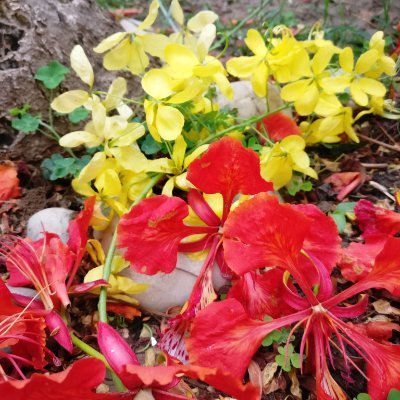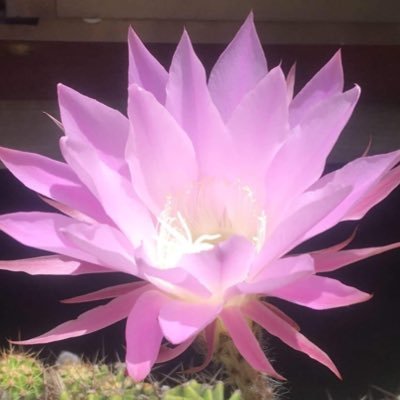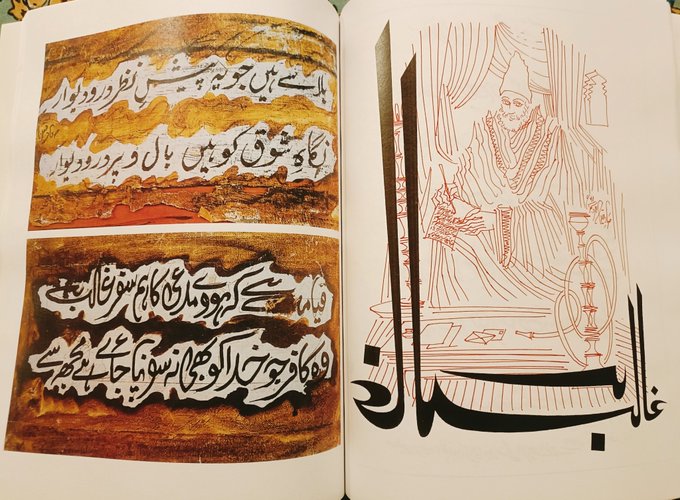
Iqtibas اقتباس
@iqtibaas88
Followers
3,076
Following
360
Media
2,216
Statuses
4,129
کتابِ زندگی سے اقتباسات Mostly literary stuff: excerpts from Urdu/Hindi/English books, quotations, musings Also: food, plants & paintings
New Delhi/Gurgaon
Joined February 2022
Don't wanna be here?
Send us removal request.
Explore trending content on Musk Viewer
石破さん
• 357365 Tweets
Maggie Smith
• 352330 Tweets
Zelenskyy
• 149472 Tweets
Harry Potter
• 104768 Tweets
プロセカ
• 85288 Tweets
Rest in Peace
• 76764 Tweets
OHMLENG NEXT STEP
• 46247 Tweets
ケンタッキー
• 45097 Tweets
Downton Abbey
• 44969 Tweets
#아니죠아니죠_쩡쩡이생일이죠
• 42466 Tweets
#ジョンウずっと一緒にいよう20歳もこれからも
• 41138 Tweets
Unchanging Love for Jeongwoo
• 40888 Tweets
シロネン
• 31821 Tweets
マクゴナガル先生
• 30868 Tweets
#ネトフリでタイプロ
• 27788 Tweets
Hogwarts
• 23718 Tweets
マギー・スミスさん
• 23453 Tweets
#ساعه_استجابه
• 23137 Tweets
マジック1
• 22038 Tweets
Professor McGonagall
• 20930 Tweets
バズ・ライトイヤー
• 13243 Tweets
ナヒーダ
• 12060 Tweets
メカウマ娘
• 11262 Tweets
#人類に栄光あれ
• 10550 Tweets
Last Seen Profiles
'Om', the monthly Urdu magazine on Hindu spirituality,used to be published from Delhi till the 80s. It began in Lahore in 1934. Its editor was Gorakhnath Nanda. As a child I saw old editions of 'Om' in homes of older generation of Urdu-literate Punjabi Hindus (its major readers).
6
125
574
A recipe for layered Mango Rice ('Biranj Anba') from the era of Mughal Emperor Alamgir.
Pulp of ripe mangoes is mixed with saffron & cream,then layered with rice & milk. Cooked in 'dum'. Lastly garnished with mango slices.
Urdu recipe from Salma Hussain's book 'Shahi Ziyafatein'
#EidMubarak
to everyone.
Sharing special Mango Biryani to my lovely Tweeps!
Please spread the Mango lub❤️🤣
46
21
90
5
62
298
Here is my hastily written English translation of this Mughal-era Mango Rice 'Biranj Anba' recipe:
8
49
294
The famous Nizami Press of Lucknow. Belongs to a very vibrant era of Urdu publishing (1930s onwards).
Strolling through the vibrant streets of Nakkhas, I'm always captivated by the ancient houses lining both sides. Their enduring charm compels me to capture their essence through my lens each time I pass by.
#Lucknow
12
72
667
0
30
182
Even as late as 1985,the paperwork in areas like South Delhi (large population of Punjabi migrants)had an Urdu option. Pics below,frm my family records.
Some very old Punjabi uncles in our neighborhood used to read Urdu newspaper becoz they were more comfortable with that script.
2
35
179
In his book of recipes from the kitchens of Lucknow, Mirza Jaafar Husain writes that Shahi Tukra was made with Sheermal in the old days. However, with changing times,'hotels' & cooks started making it from bread.
Here he gives his favourite Fajju Bawarchi's recipe (in Urdu).
From kebabs that melt in your mouth to the authentic flavours of shahi tukda, these are the top places in Delhi for a complete iftar experience. Click the link to learn more.
#OutlookTraveller
#Travel
#TravelGuide
0
3
3
9
18
125
The fairy Rooh Afza was the faithful companion of the legendary fairy Bakawali, from the 'Gul-e Bakawali' series of Urdu-Hindi literature, on which Gulzar-e Nasim was based.
In the end, Rooh Afza pari marries Bihram, son of the vizier, with Bakawali's help.
2
34
118
Haryana has a wealth of old Farsi inscriptions too & cities like Hansi, Panipat, Ambala & Narnaul produced many Urdu & Farsi poets, scholars & Sufis. Zatalli, Hali etc.
Some Farsi inscriptions from Palwal, Hansi & Sonipat 👇 (source: American Institute of Indian Studies,Gurgaon)
1
23
115
People's Publishing House in Delhi's Connaught Place used to have a small but nice collection of Urdu books published by Raduga/Progress.
PPH had their own Urdu books too, like this collection of Partition stories 'Kitne Toba Tek Singh', that I bought many years ago.
3
13
107
This felt tip liner that I bought from the book fair is a new addition to my calligraphy stock. Great for Urdu/Farsi calligraphy & easy to use.
Here I copied a Farsi couplet from Mir Taqi Mir's autobiography 'Zikr-e Mir' which describes a ruined Delhi.
5
10
102
The two types of traditional cuisine setups popular in late Mughal/pre-1857 Delhi, depicted here. Nanbai & Halwai. These shops were set up in Mehrauli during 'Phoolwalon Ki Sair'.
The basic, popular versions of naan-paratha, salan, qorma of Delhi are derived from these Nanbais.
@hganjoo_153
I think the basic dishes of the popular 'Mughlai' food of Delhi are actually derivatives of the old bhatiyar-khanas (inns) or nanbais. These served pilgrims or travelers. Tandoori breads, grilled meats, salan etc. Delhi's Old Urdu literature has many references to these.
0
6
26
3
25
99
"Europe Ka Lucknow: Vienna"
(by Makhdoom Mohiuddin)
Happy May Day from Vienna! 🌷 Whether you're joining the traditional parades or enjoying a leisurely day in one of our beautiful parks, Vienna is buzzing with energy today. 🌸
#ViennaNow
0
27
124
3
18
95
Someday I hope to do some detective work to map the places that influenced Pakeezah.
Most identify the location as Lucknow,but Shahabuddin lived in Gali Qasim Jan of Delhi! Chawri was nearby. Qabristan could've been Mehndiyan (a doli-ride away). Second town was Rampur or Agra.
5
13
86
A list of 37 Farsi works that were translated from Indian languages (Sanskrit etc.). Beginning from Panchatantra,to Katha Saritsagara to Gul Bakawali. These inspired the vibrant qissa-dastan & 'swaang' traditions of Urdu-Hindi.
(From 'Mizrab-e Dakan' by Dr. Nurus Sayeed Akhter)
3
22
85
Mughal ruler Shah Alam continued the tradition by composing poetry in Braja-Bhasha, collected in his 1797 work 'Nadirat-e Shahi'. This poetry was meant to be sung in raga form.
Had all sorts of songs/poems, from 'Istuti Peeran' (in praise of saints) to birthday, eid, holi songs.
1
26
88
Audio clip of an excerpt of Mirza Ghalib's letter in which he recalls the names of Delhi's wells, gardens & neighborhoods that were wiped off by the British (after suppression of 1857 Ghadr):
An excerpt from Ghalib's letter describing Delhi post the revolt in 1857. Ghalib wrote this letter to Mirza Hargopal Tafta, one of his closest friends. Tafta hailed from Sikandrabad and often visited Ghalib in Delhi.
Voiceover:
@Ayesha___Najeeb
0
6
24
1
29
86
There is an anecdote about the mysterious 'sabz-posh' (green-clad) Delhi heroine of 1857. Dressed in the green garb of a faqir,she recounts her tale to the narrator of this piece in Qutb Sahib's dargah in Mehrauli.
She found inspiration to fight after a vision in Ajmer Sharif.
#KnowYourHeroes
The brave unknown, unsung
#Women
of the
#Uprising1857
( image of Jhalkari Devi)
Some unknown unsung women who sacrificed their all in
#1857
#FirstWarOfIndianIndependence
# Uprising
1. Our country is unaware of the sacrifice of queen of Tulsipur. The queen of
0
15
49
1
18
80









































































































































































































































































